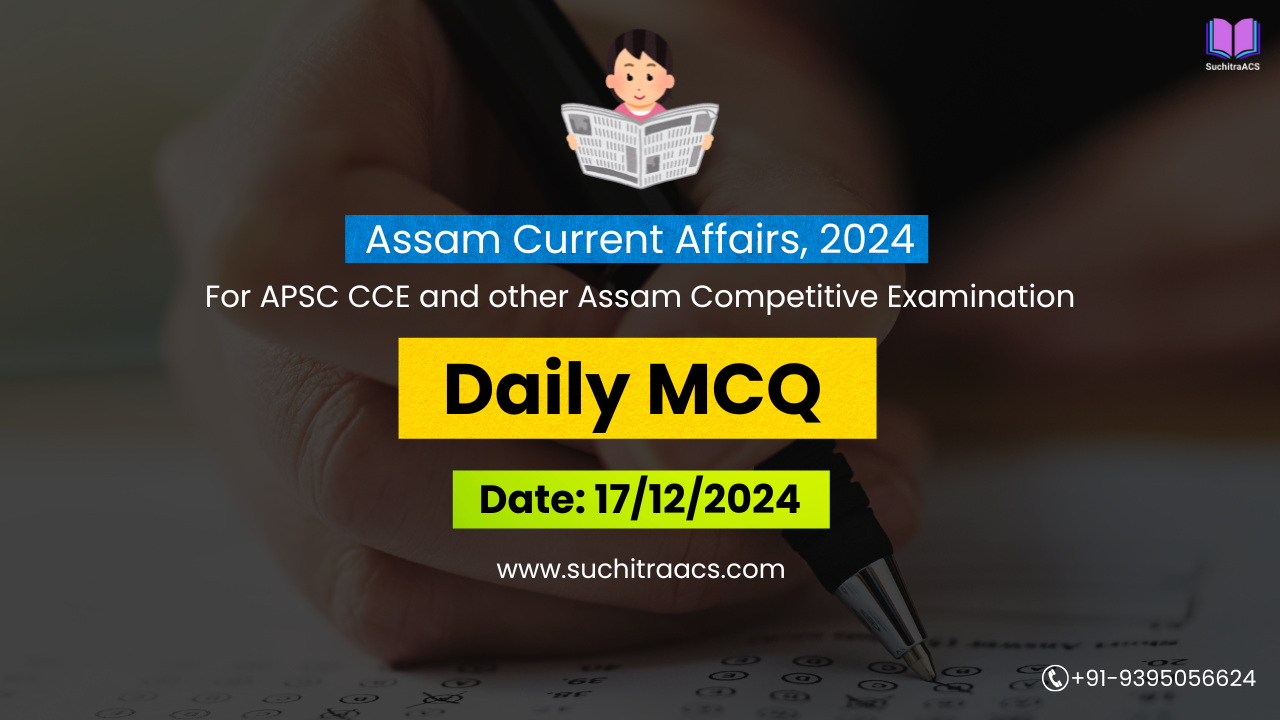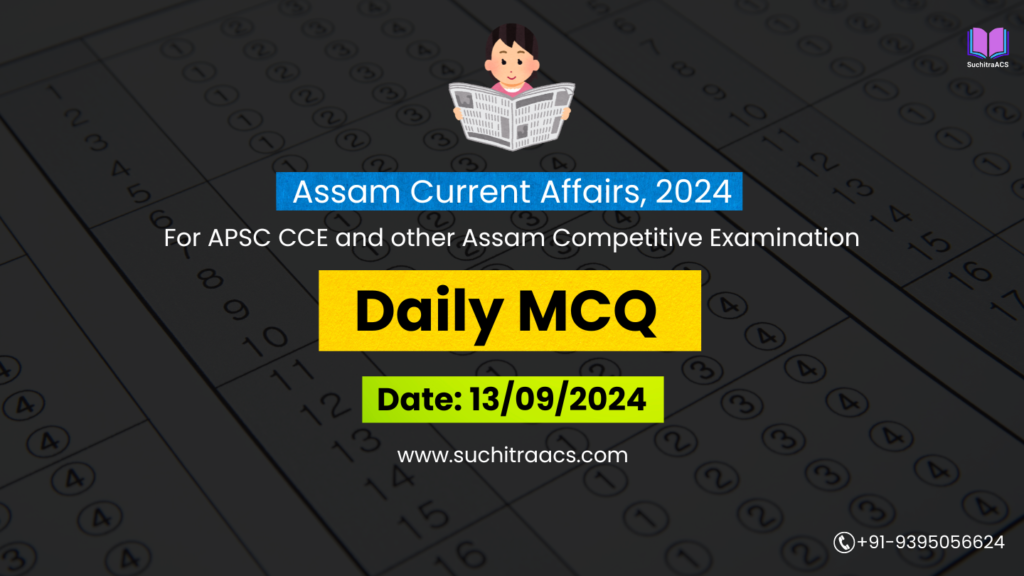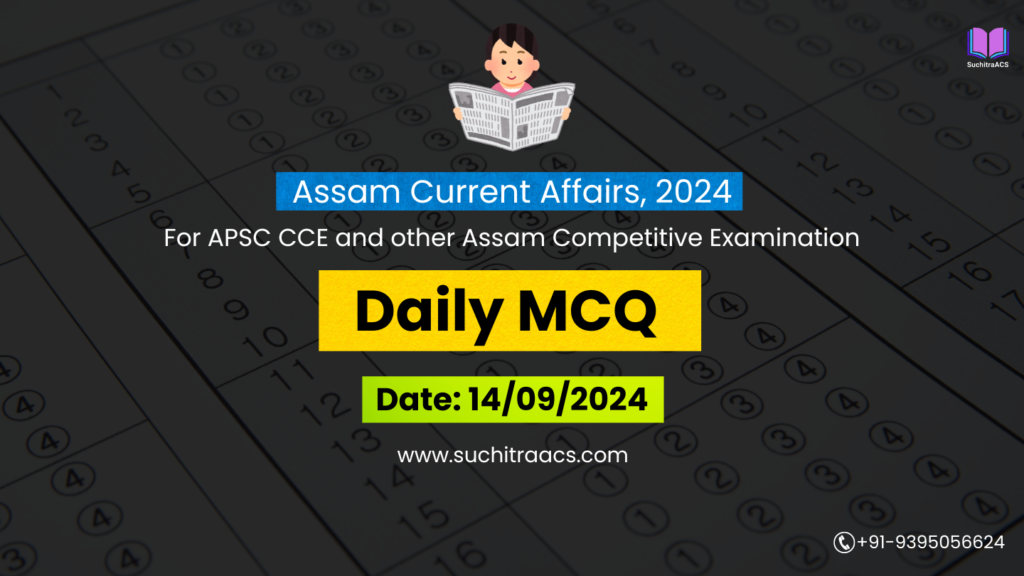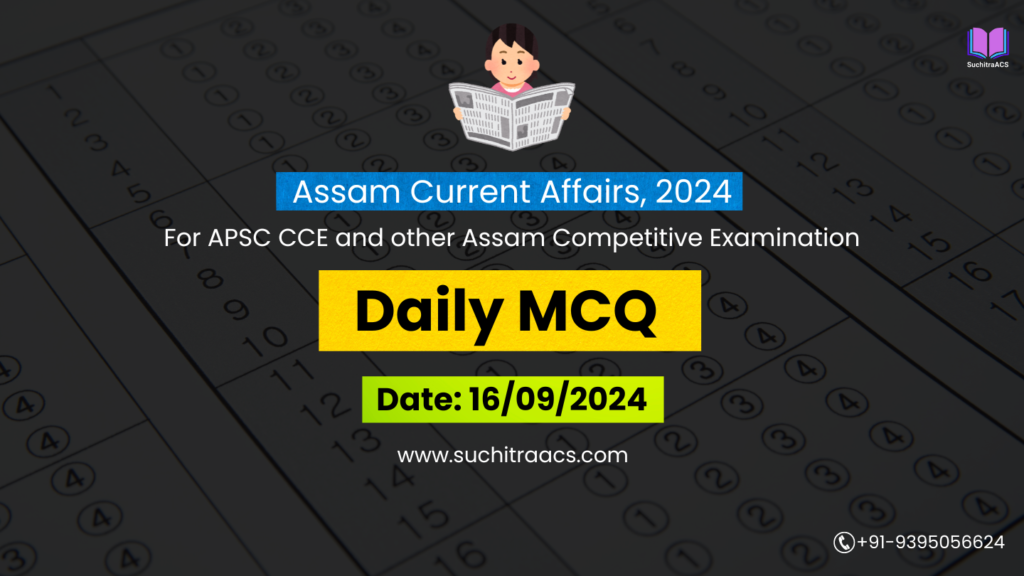APSC MCQs / APSC Prelims Practice Questions based on Assam Tribune (Daily) – 17/12/2024
For APSC CCE and other Assam Competitive examinations aspirants, practicing Daily MCQs is vital. This blog covers most important Prelims questions from the Assam Tribune today (17-12-2024). These issues are key for both APSC Prelims syllabus, offering insights into the important topics of current affairs.
APSC MCQs / APSC Prelims Practice Questions (Date: 17/12/2024)
Topic 1: Infrastructure Cost Overruns in Assam’s Central Projects
Q1. Which of the following is the main reason for cost overruns in infrastructure projects in Assam?
a) Increase in land acquisition costs
b) Inadequate labor supply
c) Poor environmental safeguards
d) Frequent changes in project design
Answer: a) Increase in land acquisition costs
Explanation:
- Cost overruns are largely due to delays and rising land acquisition costs, as reported in major infrastructure projects in Assam.
Q2. The PRAGATI initiative, related to infrastructure monitoring, is led by:
a) NITI Aayog
b) Ministry of Finance
c) Prime Minister’s Office
d) Ministry of Road Transport and Highways
Answer: c) Prime Minister’s Office
Explanation:
- PRAGATI (Proactive Governance and Timely Implementation) is a real-time monitoring system chaired by the PM to review delayed infrastructure projects.
Topic 2: Assam’s Initiative to Promote Bamboo-Based Industries
Q3. Assam accounts for what percentage of India’s total bamboo production?
a) 10%
b) 15%
c) 20%
d) 25%
Answer: c) 20%
Explanation:
- Assam contributes 20% of India’s total bamboo production, positioning it as a significant bamboo-producing state.
Q4. The National Bamboo Mission (NBM) was launched in which year?
a) 2016
b) 2017
c) 2018
d) 2019
Answer: c) 2018
Explanation:
- The NBM was launched in 2018 to promote bamboo plantations, value addition, and industrial use of bamboo products.
Q5. Bamboo charcoal is primarily used for:
a) Organic fertilizers
b) Water purification and biofuel
c) Industrial metal extraction
d) Textile manufacturing
Answer: b) Water purification and biofuel
Explanation:
- Bamboo charcoal has multiple applications, including use as a biofuel and in water purification systems.
Topic 3: Flood-Resilient Infrastructure Development in Assam
Q6. Which World Bank-funded project focuses on flood and erosion risk management in Assam?
a) Namami Brahmaputra Project
b) Assam Flood Management Project
c) Assam Integrated Flood and Riverbank Erosion Risk Management Project (AIFRERM)
d) Northeast Water Resource Management Initiative
Answer: c) Assam Integrated Flood and Riverbank Erosion Risk Management Project (AIFRERM)
Explanation:
- AIFRERM is a World Bank-supported project aimed at mitigating flood and erosion risks in Assam.
Q7. What innovative material is being used to strengthen embankments in Assam?
a) Reinforced concrete
b) Geo-synthetic materials
c) Steel girders
d) Stone cladding
Answer: b) Geo-synthetic materials
Explanation:
- Geo-synthetics are being used to make embankments more durable and resistant to erosion caused by floods.
Topic 4: Assam’s Efforts to Combat Human-Wildlife Conflict
Q8. Which of the following districts in Assam is NOT commonly associated with human-elephant conflict?
a) Udalguri
b) Sonitpur
c) Goalpara
d) Sivasagar
Answer: d) Sivasagar
Explanation:
- Districts like Udalguri, Sonitpur, and Goalpara are hotspots for human-elephant conflict, whereas Sivasagar is not as affected.
Q9. The Gaj Yatra campaign focuses on:
a) Tiger conservation in protected areas
b) Creating awareness about elephant conservation and peaceful coexistence
c) Rhino conservation through anti-poaching measures
d) Leopard rescue and rehabilitation
Answer: b) Creating awareness about elephant conservation and peaceful coexistence
Explanation:
- Gaj Yatra is a nationwide campaign to promote awareness and community involvement in elephant conservation.
Q10. What is the primary purpose of bio-fencing in human-wildlife conflict mitigation?
a) To deter animals using natural barriers
b) To electrify the perimeter of human settlements
c) To restrict animal movement through physical walls
d) To monitor animal activities using sensors
Answer: a) To deter animals using natural barriers
Explanation: Bio-fencing uses natural barriers like bamboo and thorny plants to prevent animals, particularly elephants, from straying into human settlements.
 APSC Prelims Crash Course, 2025
APSC Prelims Crash Course, 2025
at most affordable rate in Assam!

🔔 Join Our WhatsApp Study Group!
For exclusive access to premium quality content, including study materials, current affairs, MCQs, and model answers for APSC CCE and other Assam competitive exams.
Click here to join: SuchitraACS Study WhatsApp Group
📚 Want to know more about SuchitraACS’s most affordable courses?
Click here to know more: SuchitraACS Courses for APSC CCE and Assam Competitive Examinations




